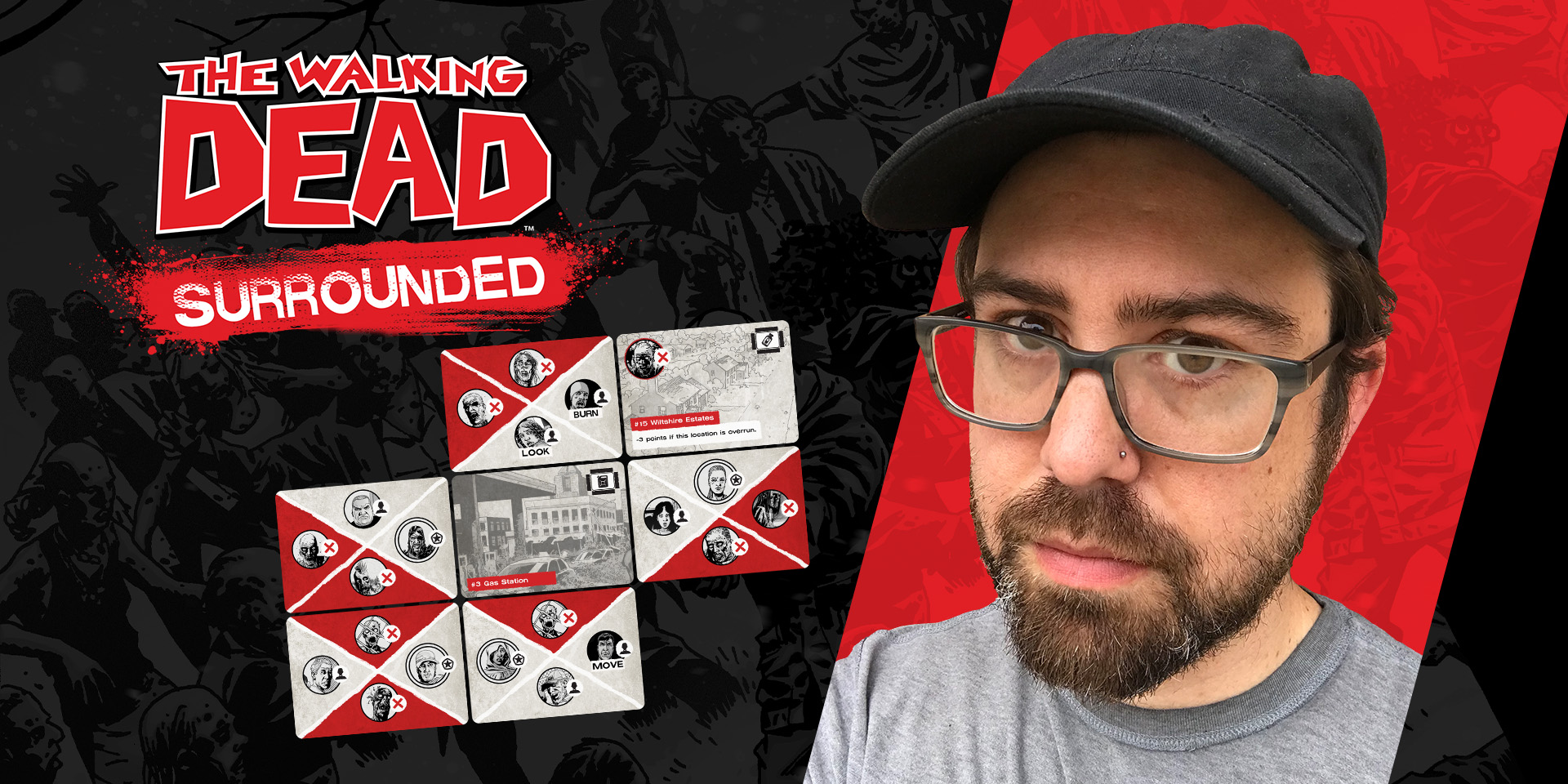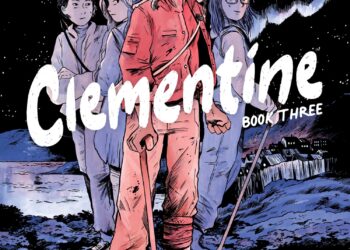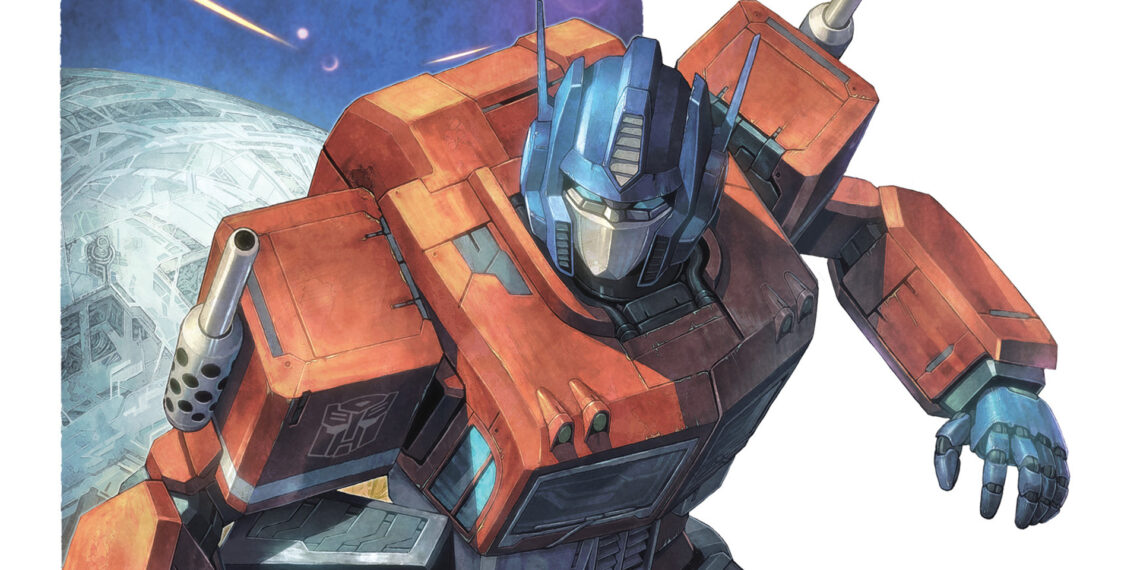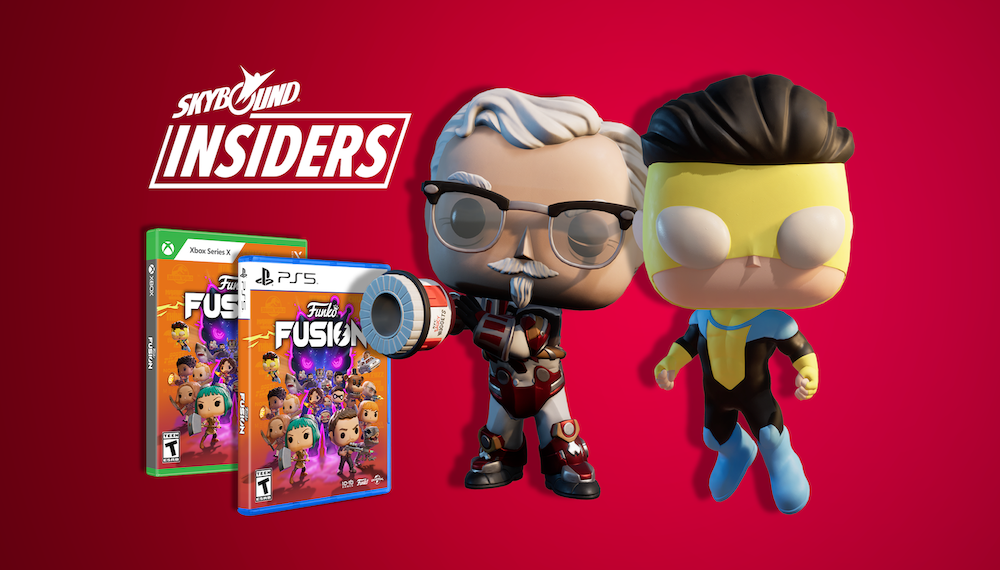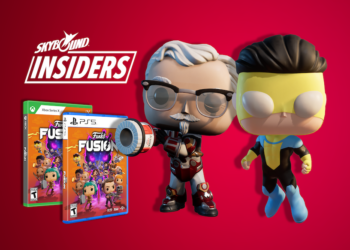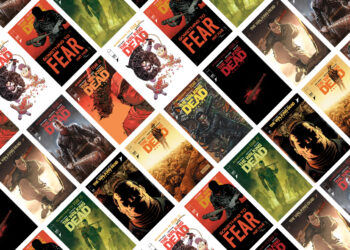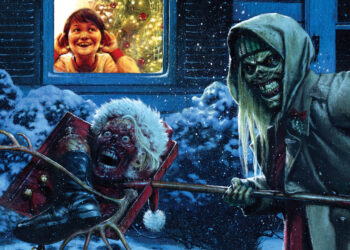Fans of The Walking Dead are currently enjoying a renaissance. With new issues of The Walking Dead Deluxe arriving regularly, the recent The Walking Dead: The Ones Who Live enjoying critical acclaim, and The Walking Dead: Solve to Survive puzzles now available exclusively via our free-to-join rewards program Skybound Insiders. And last week saw the debut of The Walking Dead: Surrounded, a tabletop game from Button Shy Games. We sat down with the company’s publisher and game designer Jason Tagmire for a look at the making of this intriguing new Walking Dead experience. Here’s what Jason had to tell us…
What sparked your collaboration with Skybound?
I know [Skybound Business Development Manager] Tricia Victor from being a customer of ours, and being a champion of our work. At some point, she reached out about working together with Skybound on something different.
As a company working on projects with other companies, I always say, “Let’s try something. Let’s see if we work well together.” So the one opportunity that arose was doing one of our style of games. We make these little, tiny pocket wallet games that sit alongside the normal board game industry. It’s not exclusively us that does this kind of thing but it’s definitely our specialty. So it was like, “How can we make a pocket-size game with Skybound?” Then it evolved into “The Walking Dead would be a really good property for that.” Something that we were really interested in doing and something that could translate into a pocket game that we could handle. It seemed like a really cool opportunity for us to do our thing – making small, accessible games that you can take on the go – and combine it with an IP for the first time. As a company, we’ve never released a game with an IP.
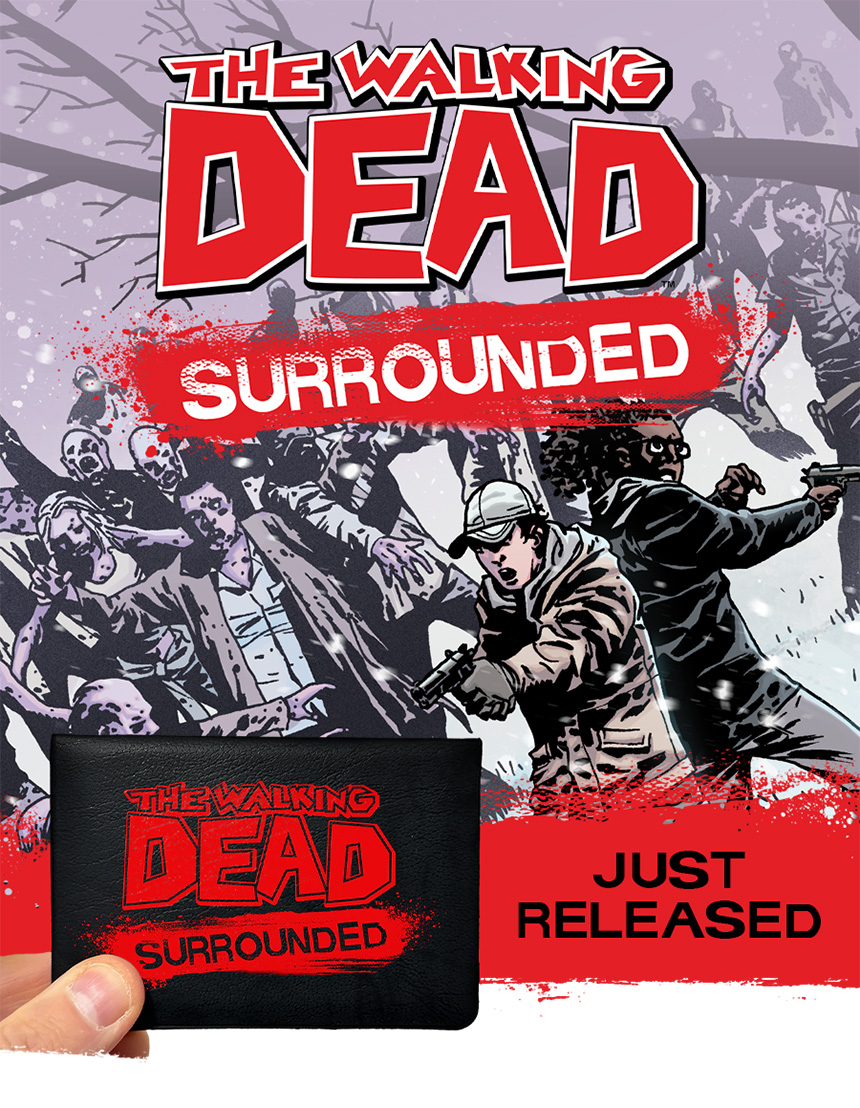 How did the concept for this particular game evolve?
How did the concept for this particular game evolve?
It’s funny, because I wrote down a whole ton of notes. I had been rewatching episodes of the show and just jotting down terms that I thought were great, like “Walker swarms,” “humans versus humans,” “personal relationships,” “great locations,” “always on the move,” “people come back!” “struggle for leadership,” “different factions,” and so on. I thought about all those with an 18-card model for our game, and a game with variability baked in. Because if you have 18 cards and no variability, you play it once or twice and you’re done with it. Variability keeps people coming back and justifies the small product size. So all these things – player counts, who are the players – I jotted them all down, and then went on to our company Discord and said, “We’re working on a game, it’s a secret, it’s an adventure game. We’re looking for some designers that might be interested in potentially designing the game.”
I got together 20 people, a couple of them handpicked – people we’ve worked with, a couple people we’ve wanted to work with, and a couple people we’ve just known from seeing their work around. I gave everybody an NDA and said, “Here’s the project. Here’s our notes, what we’re looking for. Let’s do pitches. We might pick one, we might merge a couple. Let’s just see where we go as a group.” It was a really good group of people. They all submitted pitches. We went through all of them, and eventually decided we were not going to do any of them and were going to design our own game with the knowledge from what everybody showed us. That helped us realize what we wanted based off of all of their games. A lot of people did things that were similar – lots of games where you spread out the cards and you’re working your way across the land. Each one had Walkers that spawn and everything else. A lot of it felt like it should have been a board game. Our games are just cards in this little wallet.
So we took all that, went back, and then designed it in-house. I spent nights working on it, worked with our really great dev team, and came up with this new idea that was the opposite of everything that was submitted. It was more map-based, a game that uses the table in a great way and doesn’t feel like it should have been a board game where you’re sliding tokens. So it was a really interesting process for us. It wasn’t the first time I’ve done one like that, where we get a bunch of heads involved and pick one or merge them. I like projects like that, and I’ve done those for years. But this was the first one where it was, “Oh no, we’re not doing any of the ideas.” Instead we found out what we wanted based on all of the ideas.
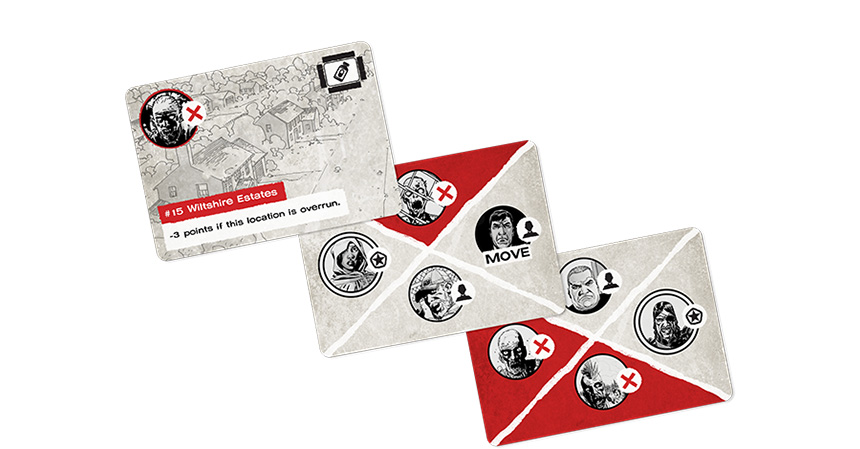 Can you describe the game for us?
Can you describe the game for us?
The game is called The Walking Dead: Surrounded because it’s about surrounding locations. You’re building these locations, placing people and Walkers at them, and trying to survive. As you play cards to surround the locations, you’re going to get Walkers. And as you play a location out, additional Walkers spawn and seed the board. But you can also play occupants there and the occupants are going to fight the Walkers. And you can play leaders there, and the leaders are going to also fight the Walkers – but they can gain you extra points for leading people. So depending on how many people you have around this location, everybody’s going to battle at the end of the round. You’ll count your points to see how many people you have standing, how many occupants, how many leaders. The leaders multiply based off of everybody that they’re leading, and leaders also fight each other. So you can never have more than one leader. That’s the whole humans versus humans thing that we wanted to get into the game.
The gist of it is you play a card as either a location or the people that surround it, and as you go the whole table is filled with locations. There’s some special abilities that move cards around and at the end you look at your first location, see who’s surrounding it, see who killed each other, see who survived, score it, go to the next location, and score all of them. The base game is very simple – play everything, score at the end. In the rulebook there are 18 different scenarios that take that and twist it a little bit. And multiple levels of difficulty. For example, as you’re building this map with all the characters surrounding it, you’ll see Walkers on the very edge of the playing area. So now you’re trying, for a high score, to kill the Walkers at the locations but also be careful not to have them on the edges of the map. Because those are going to lose you points.
There’s all these different scenarios because with a map-building, battle game, if you play it so many times, you might be done with it. But every single time you play this game it has a different scenario, a slightly different twist on the on how you win or how you might lose.
 Were you a longtime fan of The Walking Dead?
Were you a longtime fan of The Walking Dead?
Yeah. I’m a wannabe comic fan. [Laughs.] I buy them and they sit in a box. I pull them out when I’m on a flight. I do go to the conventions, I have so many friends at them. But I’m just the worst. I have all these board games, and two of them get played. So I’ve known about The Walking Dead since it came out, and I’ve watched the show. As far as the comic goes, I have a bunch but I’m just the worst comic fan out there. Since I was a kid, I’ve been more of a collector than anything else. I have it all, and I have more than I could ever read or watch. [Laughs.]
The research for this game was fun. Just diving in and getting into what people liked about the TV series and the comics. The game is based off the comic, but the show is close enough to the comics that it makes sense for fans of the show. I really wanted to see what struck a chord with people and what fans of both the show and the comics latched onto.
What do you think fans will enjoy most about the game?
First of all, the visual tone of it is really cool. We went with just black, white and red. It feels like a comic book. It just shines on the table in its simplicity. Fans are gonna see a million characters that they know, and some that they probably don’t know. But there’s a bunch of easter eggs in all the characters that we chose for the locations. So there’s gonna be a cool bit of familiarity.
When you’re playing it, it’s just gonna feel like you’re constantly on the move. “Struggle” was the key word that runs through everything – struggle for leadership, struggle for survival – in surrounding these locations and trying to make sure that you have enough people surviving to get positive points, and not get overrun by the Walkers. I think it presents some interesting new challenges for fans. A new combination of characters in a location they’ve never been in. It builds a little story in your head, of how these people would interact who never interacted in the comic or the show.
For exclusive Skybound coverage and rewards, join Skybound Insiders now. Free to join!




